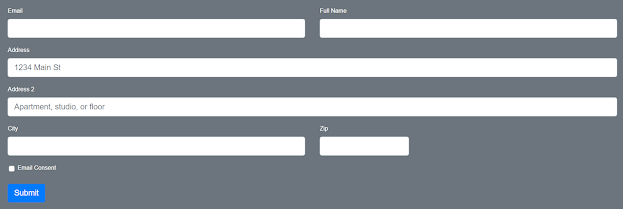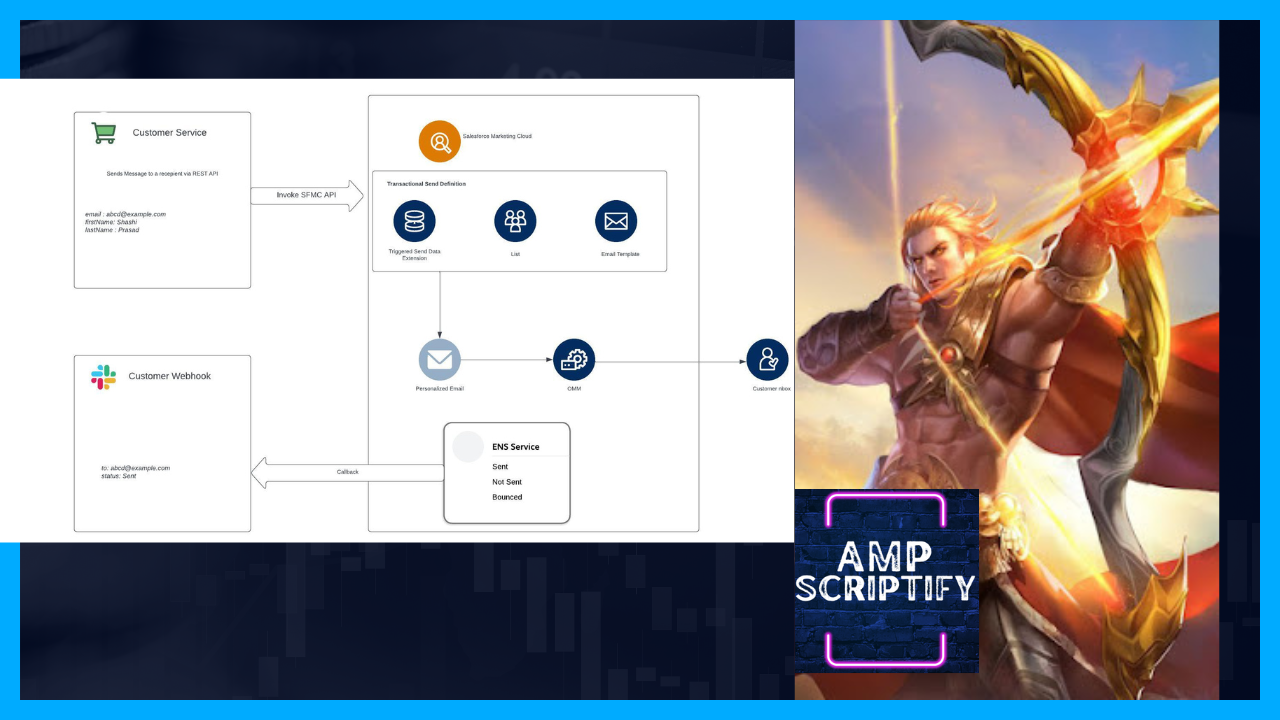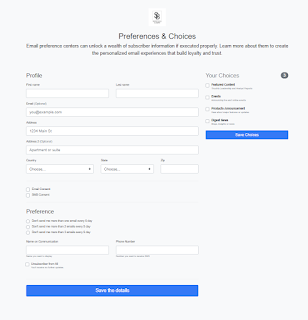BuildRowSetFromJSON: Retrieving Access Token via BuildRowSetFromJSON Function
This documentation provides a step-by-step guide on how to retrieve an access token using the AMPScript
functions
LookupOrderedRows, RowCount, HTTPPost2, and
BuildRowsetFromJson.
The access token will be obtained by making a request to the Authentication API and parsing the JSON
response.
Prerequisites
Before proceeding, ensure that you have the following:
- An understanding of basic AMPScript syntax and functionality.
- Access to the Authentication API and the necessary credentials (client ID, client secret, etc.).
- A working knowledge of the AMPScript functions mentioned above.
Steps
-
Initialize the necessary variables:
<!-- AMPScript --> %%[ VAR @endpoint,@payload, @callstatus, @response, @clientId, @clientSecret VAR @DataExtensionName,@numberOfRows,@property,@value,@dataset,@i ]%% -
Assign variables to Retrieve API Config details via
LookupOrderedRowsfunction:<!-- AMPScript --> %%[ SET @contentType='application/json; charset=utf-8' SET @DataExtensionName='InstallPackages' SET @numberOfRows=1 SET @property='APIConfig' SET @value='TransactionalAPI' SET @rowset=LookupOrderedRows(@DataExtensionName,@numberOfRows,"ClientID desc,ClientSecret desc",@property,@value) ]%% -
Retrieve rowset and assign cientID, Secret and AUTH API endpoint via
FIELDfunction:<!-- AMPScript --> %%[ IF RowCount(@rowset) > 0 THEN FOR @i=1 TO RowCount(@rowset) DO SET @row=Row(@rowset,@i) SET @AuthAPI=FIELD(@row,'AuthAPI') SET @clientId=FIELD(@row,'ClientID') SET @clientSecret=FIELD(@row,'ClientSecret') NEXT @i ENDIF ]%% -
Assign variables to Retrieve Method URL details via
LookupOrderedRowsfunction:<!-- AMPScript --> %%[ SET @DataExtensionName='APIMethods' SET @numberOfRows=1 SET @property='MethodName' SET @value='Request SFMC Token' /* call LookupOrderedRows to Retrieve Method URL details*/ SET @rowset=LookupOrderedRows(@DataExtensionName,@numberOfRows,"MethodURL desc",@property,@value) ]%% -
Retrieve rowset and assign MethodURL via
FIELDfunction:<!-- AMPScript --> %%[ IF RowCount(@rowset) > 0 THEN FOR @i=1 to RowCount(@rowset) DO SET @row=Row(@rowset,@i) SET @MethodURL=FIELD(@row,'MethodURL') NEXT @i ENDIF ]%% -
Make a POST request to the Authentication API using the
HTTPPost2function:<!-- AMPScript --> %%[ SET @endpoint = Concat(@AuthAPI,@MethodURL) /* define the payload*/ SET @payload = Concat('{"client_id": "',@clientId,'", "client_secret": "',@clientSecret,'","grant_type": "client_credentials"}') /* Invoke HTTPPOST */ HTTPPost2(@endpoint, @contentType, @payload,true,@response, @callstatus) ]%% -
Retrieve the access token from the response using the
BuildRowsetFromJsonfunction. This function converts the JSON response into a rowset, allowing us to extract the desired value.<!-- AMPScript --> %%[ SET @rowset=BuildRowsetFromJson(@response, '$.*',1) SET @row=Row(@rowset,1) SET @accessToken=FIELD(@row,'Value') SET @row=Row(@rowset,2) SET @tokentype=FIELD(@row,'Value') SET @authorization=Concat(@tokentype,' ',@accessToken) ]%% -
The third argument/parameter in
BuildRowsetFromJsonfunction returns an empty rowset or error. A value of 0 does not return an empty rowset while 1 returns an empty rowset. -
You now have the access token stored in the
@accessTokenvariable and can use it for subsequent API calls.
Analysis
Before compiling the full code , lets analyse BuildRowsetFromJson function:
- An understanding of JSONPath -- XPath for JSON is required. You can refer the documentation here.
- We should focus on Javascript Example for better understanding. And more on the Result noted in A.7 section of the documentation.
- The example clearly states, quote
"Please note that the return value of jsonPath is an array, which is also a valid JSON data item. So you might want to apply jsonPath to the resulting data item again or use one of your favorite array methods as sort with it."unquote - Our Access Token response in JSON Notation looks like
<!-- JSON --> { "access_token": "", "token_type": "", "expires_in": 1051, "scope": "", "soap_instance_url": "https://{{tenantEndpoint}}.soap.marketingcloudapis.com/", "rest_instance_url": "https://{{tenantEndpoint}}.rest.marketingcloudapis.com/" } - Output would be like
<!-- Rowset --> value: [ "eyJhbGciOiJIUzI1NiIsImtpZCI6IjQiLCJ2ZXIiOiIxIiwidHlwIjoiSldUIn0.jhggh.etc", "Bearer", 1051, "web_read web_write", "https://{{tenantEndpoint}}.soap.marketingcloudapis.com/", "https://{{tenantEndpoint}}.rest.marketingcloudapis.com/" ]
Full Code Base
<!-- AMPScript -->
%%[
/* ===================== Define variables ==========================
01. @endpoint - https://{{tenantendpoint}}.auth.marketingcloudapis.com/v2/Token
02. @payload - define the payload for the POST operation to AUTH API
03. @response - Output parameter used to contain returned response body information from the HTTP POST request.
04. @clientId - assign/store client id
05. @clientSecret - assign/store client secret
06. @DataExtensionName
07. @numberOfRows
08. @property
09. @value
10. @row
11. @rowset
===================================================================*/
VAR @endpoint,@payload, @callstatus, @response, @clientId, @clientSecret
VAR @DataExtensionName,@numberOfRows,@property,@value,@dataset,@i
/* ===================== variables assignment =======================*/
SET @contentType='application/json; charset=utf-8'
SET @DataExtensionName='InstallPackages'
SET @numberOfRows=1
SET @property='APIConfig'
SET @value='TransactionalAPI'
/* call LookupOrderedRows to Retrieve API Config details*/
SET @rowset=LookupOrderedRows(@DataExtensionName,@numberOfRows,"ClientID desc,ClientSecret desc",@property,@value)
/* ===================================================================*/
IF RowCount(@rowset) > 0 THEN
FOR @i=1 TO RowCount(@rowset) DO
SET @row=Row(@rowset,@i)
SET @AuthAPI=FIELD(@row,'AuthAPI')
SET @clientId=FIELD(@row,'ClientID')
SET @clientSecret=FIELD(@row,'ClientSecret')
NEXT @i
ENDIF
/* ===================== variables assignment =======================*/
SET @DataExtensionName='APIMethods'
SET @numberOfRows=1
SET @property='MethodName'
SET @value='Request SFMC Token'
/* call LookupOrderedRows to Retrieve Method URL details*/
SET @rowset=LookupOrderedRows(@DataExtensionName,@numberOfRows,"MethodURL desc",@property,@value)
/* ===================================================================*/
IF RowCount(@rowset) > 0 THEN
FOR @i=1 to RowCount(@rowset) DO
SET @row=Row(@rowset,@i)
SET @MethodURL=FIELD(@row,'MethodURL')
NEXT @i
ENDIF
/* ===================== variables assignment =======================*/
SET @endpoint = Concat(@AuthAPI,@MethodURL)
/* define the payload*/
SET @payload = Concat('{"client_id": "',@clientId,'", "client_secret": "',@clientSecret,'","grant_type": "client_credentials"}')
/* Invoke HTTPPOST */
HTTPPost2(@endpoint, @contentType, @payload,true,@response, @callstatus)
SET @rowset=BuildRowsetFromJson(@response, '$.*',1)
SET @row=Row(@rowset,1)
SET @accessToken=FIELD(@row,'Value')
SET @row=Row(@rowset,2)
SET @tokentype=FIELD(@row,'Value')
SET @authorization=Concat(@tokentype,' ',@accessToken)
]%%
%%=v(@authorization)=%%Conclusion
In this documentation, we learned how to retrieve an access token using the AMPScript functions
LookupOrderedRows, RowCount, HTTPPost2, and
BuildRowsetFromJson. By following these steps, you can integrate the Authentication API into your
AMPScript-powered applications and also leverage BuildRowsetFromJson function for other REST API purposes.








Comments
Post a Comment